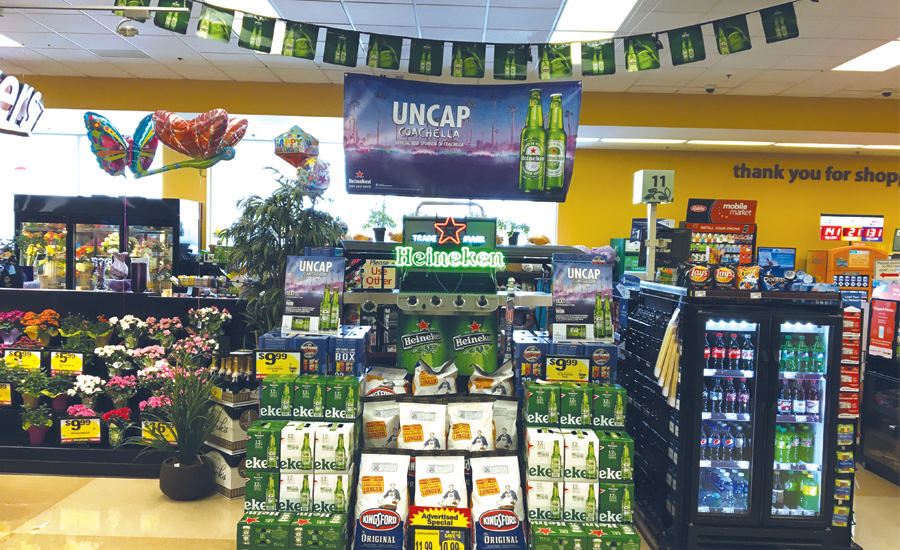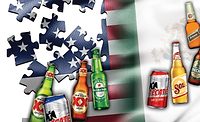HEINEKEN USA segments channels, fosters retailer success
Millennials, Hispanics key demographic for brand

Although category management and merchandising commonly are associated with shelf resets and assortment rationalization, for White Plains, N.Y.-based HEINEKEN USA, it is much more than that. The global beer company works to thoroughly understand its consumers’ beer-drinking occasions while building relationships with retailers that will drive long-term, sustainable customer loyalty, says Vikas Satyal, senior director of category development.
“Today there is a greater opportunity to understand beer consumption occasions and how they link to an overall path-to-purchase,” Satyal says. “We have taken steps to better identify these occasion opportunities. If we can build a platform or program for a retailer that is occasion-driven, everyone wins: category, shopper, retailer and supplier.”
Connecting consumer attitudes and behaviors through segmentation also is critical to better understanding the values of different types of beer shoppers. “We see retailers invest in segmentation strategies for areas such as [household budgetary constraints] (HBC), soft drinks and cereal,” he explains. “How can we get the beer category to think similarly? In the era of ‘big data,’ can we target shoppers based on their profiles and link them to the right occasions to drive them down the aisle? The opportunity is ripe.”
To enhance the shopping experience, some retailers also are investing in ways to reinvent categories. Among those options include looking at retailer space, lighting, assortment, signage and education to drive consumer experimentation, expand trial and increase engagement, he adds.
HEINEKEN USA also is redefining its channel strategies because it recognizes that “retailers do not want a one-size-fits-all approach,” Satyal says. “By segmenting channels, we can offer more targeted approaches to assortment, pricing, shelving and programming. With the fragmentation of the category, continuing to follow this model in 2017 will be critical to our performance and to our retail partners’ overall success.”
A Customized Approach
Kroger, Walmart Neighborhood Market stores and HEB are among the retail partners with which HEINKEN USA is partnering. The partnerships have fostered sharing category and shopper trends, insights about the premium beer and total beer categories, and critical category-centric opportunities to reach key beer-drinking consumers, including Hispanics and millennials.
“With Walmart, we demonstrated how premium beer is relevant to their shopper. We proposed a seasonal 8-foot endcap solution for those stores that provided a ‘total upscale solution’ (imports, craft/FMB/cider),” he explains. “Together we devised a methodology and developed seasonal sets, messaging and signage for the endcaps. The solution was category-centric and delivered growth for total beer in these locations.”
A five-year plan for the overall beer category was developed in partnership with HEB that included national trends across the category, shopper insights, and pack and flavor opportunities for HEB’s diverse regional areas.
To drive category growth across grocery, mass merchandisers and convenience stores, Satyal notes that HEINEKEN USA seeks to provide each outlet with the right adjacencies, packs and pricing to give shoppers a wider range of choices that lead to expandable consumption across multiple occasions.
“For example, we may recommend more cold-box space in grocery for larger packs, while steering more toward single serve in smaller channels like convenience,” he says. “We see an opportunity to drive packs that have a high velocity and repeat rate, packs that resonate across millennials and Latino-Hispanics, and packs that resonate with the right occasions. … Perhaps the greatest opportunity is for education in-store to enhance the shopping experience. Retailers are beginning to see the impact this can have.”
When it comes to managing and merchandising HEINEKEN USA’s diverse portfolio, Satyal notes that senior management sets priorities that consistently are reinforced at the account level, with priorities determined on a brand-by-brand basis to include objectives, strategies, tactics and budgets.
Currently, the company is focusing on two segments: imported beer and hard cider. “There are synergies through the value chain, through demand planning, production, IT, straight through to distribution and shopper insights,” he says. “We are extremely focused on preserving our heritage, maintaining our quality, nurturing our trade partnerships and providing memorable experiences to our loyal consumers.”
Customer-centricity around the retailer and the shopper will continue to guide the company’s category management practices, Satyal says. This starts with a joint business plan between HEINEKEN USA and the retailer that includes the best ways to engage shoppers and to measure the customer’s path-to-purchase pre-store, in-store and post-purchase.
“With variety and fragmentation, there is tremendous opportunity in the category management space,” Satyal says. “Retailers are struggling to stay ahead of the trends and tend to be reactive, not proactive, to the marketplace: witness the proliferation of craft and [flavored malt beverage] (FMB) SKUs.
“In the short term, this is good for the category and the shopper,” he continues. “In the long term, it can add to operational costs … and lower SKU productivity. … HEINEKEN USA is driving a sustainable long-term strategy that defines an overall channel strategy.” BI
Looking for a reprint of this article?
From high-res PDFs to custom plaques, order your copy today!






